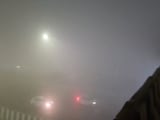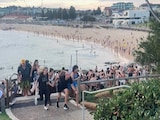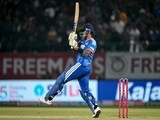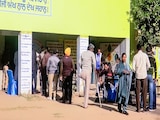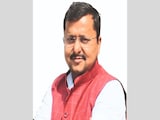As new infections in Mumbai decline, other urban centres in Maharashtra including Pune, Pimpri-Chinchwad and Nashik are driving the daily COVID-19 numbers of the state, the health department data shows.
Cities like Pune, Pimpri-Chinchwad, Nashik and Nagpur have been reporting more cases than Mumbai in the last few days.
According to experts, the latest surge of the pandemic has plateaued in the state capital.
On Wednesday, Maharashtra reported 18,067 new cases, of which Mumbai contributed 1,121 while Pune accounted for 2,966 cases.
From January 26 to 31, Pune recorded more cases than the entire Mumbai region comprising the Mumbai city and neighbouring satellites cities like Thane and Navi Mumbai.
The third wave of COVID-19, mostly driven by the Omicron variant, led to the reporting of over 40,000 new cases on some days in Maharashtra last month.
The state recorded 48,270 cases on January 21, 2022, the highest so far during the pandemic.
Mumbai's third wave seemed to have peaked around January 7 when it recorded the highest 20,971 cases. Since then, new cases in the country's financial capital have seen a steady decline.
The city had recorded over 10,000 cases every day from January 4 to 15.
But on January 31 and February 1, the new daily cases in Mumbai dipped below 1,000.
The new cases peaked in Pune, its satellite city Pimpri-Chinchwad and Nagpur on January 21. On that day, Pune recorded 8,464 infections, Pimpri-Chinchwad 4,943 and Nagpur 3,659.
Nashik city recorded its peak on January 19 with 1,946 cases.
Dr OM Srivastava, codirector-infectious diseases, Sir H N Reliance Foundation Hospital, said cases have very likely plateaued in Mumbai.
"The infectivity of the Omicron variant is much higher than what we saw during the second wave. It is the most infectious variant of SARS-CoV2 so far. It will take three to four weeks for the cases to plateau in other cities (Pune, Nashik, Nagpur).
"Overall, the state may see cases plateauing by the end of February or early March," he added.
Dr Pradeep Awate, the state's health surveillance officer, told news agency PTI that the third wave started in Mumbai on December 22, while in other cities it began from January 7-8.
"So the graph of cases also came down in Mumbai because it had started to rise much earlier. It will still take 10-15 days for the graph to come down (elsewhere)," he said.
Dr Vasant Nagvekar, member of the state task force on COVID-19 and an infectious disease consultant at Global Hospital, Mumbai, said urban areas and cities had a quick rise and decline.
"We have now started to see fewer patients seeking treatment at the family physician level which is a good sign, and it is possible that the TPR (test positivity rate) may start declining from the end of this month. We are seeing a downward trend," Dr Nagvekar said.
(Except for the headline, this story has not been edited by NDTV staff and is published from a syndicated feed.)




